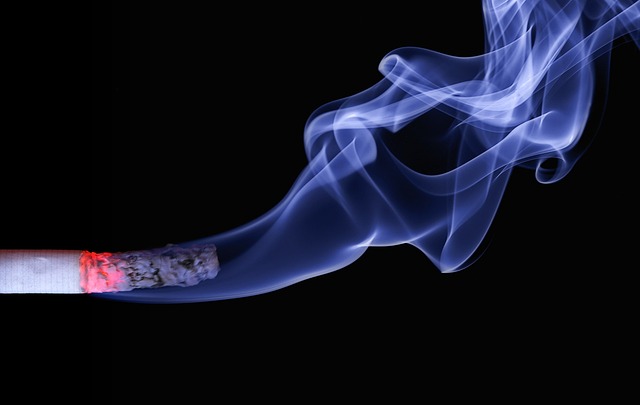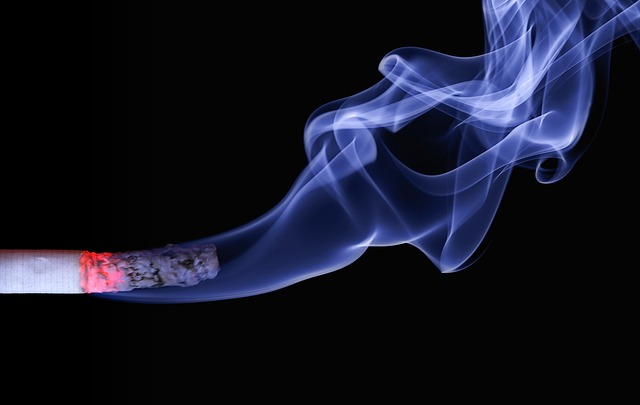Smoke-Stained Teeth? Try These Effective Cleaning Methods
Are you tired of hiding your smile due to smoke-stained teeth? We understand how frustrating it can be to deal with the discoloration caused by smoking. But fret not, for there are effective cleaning methods that can help restore the natural whiteness of your teeth. In this article, we will delve into these techniques, providing you with the knowledge and confidence to tackle smoke stains head-on. Say goodbye to the embarrassment and welcome back your pearly whites with our expert tips and advice.
1. Understanding the Problem: What Causes Smoke-Stained Teeth?
Smoke-stained teeth are a common concern among smokers, but what exactly causes this unsightly discoloration? Understanding the problem at its root can help us find effective solutions. Here are some key factors contributing to smoke-stained teeth:
- Tar: Cigarette smoke contains tar, a sticky substance that easily adheres to tooth enamel. Over time, tar builds up and causes yellowish or brownish stains on the teeth.
- Nicotine: Nicotine, the addictive component of cigarettes, is colorless on its own. However, when combined with oxygen, it turns into a yellowish substance called nicotine stain. This stain not only discolors the teeth but can also penetrate deep into the enamel.
- Temperature: Smoking involves inhaling hot smoke, which can cause the teeth to expand and contract. This constant change in temperature weakens the enamel, making it more susceptible to staining.
It’s important to note that smoke-stained teeth aren’t solely limited to tobacco smokers. Other forms of smoking, such as cigars and pipes, can also lead to similar discoloration. Additionally, secondhand smoke exposure can gradually darken teeth over time. Understanding these underlying causes can help individuals make informed decisions about their oral health and take appropriate measures to prevent or address smoke-stained teeth.

2. Professional Solutions: Dental Cleaning for Smoke-Stained Teeth
Smoking can have a detrimental effect on oral health, causing yellow or brown stains on teeth that can be difficult to remove with regular brushing alone. Fortunately, there are professional solutions available to help restore the natural white color of smoke-stained teeth.
One effective method is dental cleaning, where a dental professional uses specialized tools and techniques to remove plaque, tartar, and surface stains from the teeth. This process, also known as scaling and polishing, involves the following steps:
- Assessment: The dentist or dental hygienist will examine the teeth and gums to determine the extent of the staining and any underlying dental issues that need to be addressed.
- Scaling: Using ultrasonic or manual instruments, the dental professional will carefully remove the built-up plaque and tartar from the teeth, focusing on the areas affected by smoking stains.
- Polishing: After scaling, the teeth are polished using a special paste and a rotating brush or rubber cup. This helps to remove any remaining stains and gives the teeth a smooth and shiny appearance.
It’s important to note that dental cleaning alone may not completely eliminate deep-set smoke stains, especially if the teeth have been exposed to smoking for a prolonged period. In such cases, additional cosmetic treatments like teeth whitening or veneers may be recommended to achieve the desired results. Consulting with a dental professional is essential to determine the most suitable solution for each individual’s specific needs.

3. At-Home Remedies: Effective Methods to Remove Smoke Stains from Teeth
When it comes to removing smoke stains from your teeth, there are several effective at-home remedies that you can try. These methods can help brighten your smile and restore the natural whiteness of your teeth. Here are some tried-and-tested techniques:
- Baking soda: A simple yet powerful remedy is to create a paste using baking soda and water. Apply this paste to your teeth and gently brush for a couple of minutes before rinsing thoroughly. Baking soda acts as a natural scrub and can help remove surface stains caused by smoke.
- Oil pulling: This ancient practice involves swishing oil in your mouth for several minutes. Coconut oil is a popular choice due to its antimicrobial properties. Swishing the oil around can help remove plaque and stains from your teeth, leaving them cleaner and brighter.
- Activated charcoal: Despite its dark color, activated charcoal can actually help whiten your teeth. It works by absorbing toxins and stains from the surface of your teeth. You can create a paste by mixing activated charcoal powder with water and gently brush your teeth with it. Rinse thoroughly afterward.
Remember, while these at-home remedies can be effective, they may not provide instant or dramatic results. It’s important to be consistent and patient when trying these methods. If you’re looking for more immediate and noticeable results, professional teeth whitening treatments offered by dentists may be a better option for you. However, incorporating these natural remedies into your oral hygiene routine can help maintain a bright and healthy smile.

4. Natural Approaches: Home Remedies to Whiten Smoke-Stained Teeth
In addition to professional treatments, there are also several natural approaches and home remedies that can help whiten smoke-stained teeth. These methods are safe, cost-effective, and can be easily incorporated into your daily oral care routine. Here are some effective natural remedies to consider:
1. Oil Pulling: This ancient Ayurvedic technique involves swishing oil, such as coconut or sesame oil, in your mouth for 15-20 minutes. The oil helps remove toxins and stains from the teeth, resulting in a brighter smile. Make sure to spit out the oil and rinse your mouth thoroughly afterward.
2. Baking Soda: A staple in many households, baking soda is known for its whitening properties. Create a paste by mixing baking soda with water and brush your teeth with it for 2 minutes. Rinse thoroughly and repeat this process a few times a week to gradually reduce smoke stains.

5. Lifestyle Changes: Preventing Smoke Stains on Teeth for Long-Term Results
Preventing smoke stains on teeth requires making some lifestyle changes that can lead to long-term results. By implementing the following tips, you can maintain a bright, white smile even if you smoke:
- Brush and floss regularly: Brush your teeth at least twice a day with a fluoride toothpaste to remove surface stains caused by smoking. Don’t forget to floss daily to reach the areas between your teeth where plaque and stains can accumulate.
- Use whitening toothpaste: Opt for a whitening toothpaste specifically designed to combat smoke stains. These toothpastes usually contain mild abrasives that help remove surface stains and brighten your teeth over time.
- Avoid tobacco products: Quitting smoking or using other tobacco products is the most effective way to prevent smoke stains on your teeth. Not only will this benefit your oral health, but it will also improve your overall well-being.
Consider professional teeth whitening: If smoke stains have already taken a toll on your teeth, professional teeth whitening procedures can significantly lighten the discoloration. Consult with a dentist who can recommend the best treatment option for your specific needs.
6. Additional Tips and Tricks: Maintaining a Healthy Smile Despite Smoking Habits
While smoking can have detrimental effects on oral health, there are several tips and tricks to help maintain a healthy smile despite this habit. Here are some recommendations:
- Practice good oral hygiene: Brush your teeth at least twice a day with fluoride toothpaste and floss daily. This helps remove plaque and reduce the risk of gum disease and tooth decay.
- Visit your dentist regularly: Regular dental check-ups are essential, especially for smokers. Your dentist can detect any early signs of oral health problems and provide appropriate treatment.
- Avoid tobacco products: Consider quitting smoking or using other tobacco products altogether. This not only benefits your oral health but also improves your overall well-being.
- Limit coffee and alcohol consumption: Both coffee and alcohol can stain your teeth, making them appear dull and discolored. Try to reduce your intake or rinse your mouth with water after consuming these beverages.
Use mouthwash: Incorporating an antimicrobial mouthwash into your daily routine can help reduce the bacteria in your mouth and freshen your breath. Look for a mouthwash specifically designed for smokers.
7. The Bottom Line: Effective Cleaning Methods for Smoke-Stained Teeth
When it comes to smoke-stained teeth, effective cleaning methods can make all the difference in restoring a healthy smile. Here are some tried-and-true techniques that can help eliminate those stubborn stains:
1. Professional Teeth Cleaning: Schedule an appointment with your dentist for a professional cleaning. A dental hygienist will use special tools to remove plaque, tartar, and surface stains that regular brushing alone can’t eliminate. This deep cleaning will give your teeth a fresh start and serve as a solid foundation for further stain removal.
2. Whitening Toothpaste: Look for whitening toothpaste that contains mild abrasives and hydrogen peroxide. These ingredients work together to gently scrub away surface stains and lighten the color of your teeth over time. Remember to brush your teeth with this toothpaste twice a day for optimal results. It’s important to note that whitening toothpaste is not recommended for everyday use as excessive use may cause tooth sensitivity.
Frequently Asked Questions
Q: What causes smoke-stained teeth?
A: Smoke-stained teeth are typically caused by the regular consumption of tobacco products, such as cigarettes or cigars. This habit exposes your teeth to the tar and nicotine present in smoke, resulting in yellow or brown discoloration over time.
Q: Are there any health risks associated with smoke-stained teeth?
A: While smoke-stained teeth primarily affect your appearance, it is important to note that tobacco use in any form poses serious risks to your oral and overall health. Smoking can lead to gum disease, tooth loss, oral cancer, and a range of other health issues.
Q: What are some effective cleaning methods to remove smoke stains from teeth?
A: There are several methods you can try to effectively clean smoke-stained teeth. Regular brushing with a whitening toothpaste, using baking soda as a natural abrasive, and oil pulling with coconut oil are all effective techniques. Additionally, professional teeth whitening treatments at a dental clinic can provide more immediate and noticeable results.
Q: How does brushing with a whitening toothpaste help in removing smoke stains?
A: Whitening toothpaste contains mild abrasives and special chemicals that effectively remove surface stains, including those caused by smoking. Regular brushing with a whitening toothpaste can help diminish the appearance of smoke stains over time.
Q: Is baking soda a safe and effective method for cleaning smoke-stained teeth?
A: Yes, baking soda is considered a safe and effective home remedy for cleaning smoke-stained teeth. Its mild abrasive properties help remove surface stains, while its alkaline nature helps balance the pH levels in your mouth. However, it is important to use it in moderation and not excessively, as it may erode tooth enamel if used too frequently.
Q: How does oil pulling with coconut oil contribute to removing smoke stains?
A: Oil pulling is an ancient technique that involves swishing oil in your mouth to remove toxins and stains. Coconut oil, in particular, has antimicrobial properties that can help reduce plaque and bacteria buildup, leading to cleaner teeth and fresher breath. While it may not provide immediate results, regular oil pulling can gradually reduce smoke stains.
Q: Are professional whitening treatments recommended for smoke-stained teeth?
A: Yes, professional teeth whitening treatments are highly recommended for effectively removing smoke stains. Dentists can provide professional-grade whitening agents that penetrate deeper into the tooth enamel, providing more noticeable and long-lasting results compared to over-the-counter products.
Q: Can smoke-stained teeth be prevented?
A: The most effective way to prevent smoke-stained teeth is to quit smoking or using tobacco products altogether. By eliminating exposure to tar and nicotine, your teeth will naturally regain their natural color over time. Additionally, maintaining a good oral hygiene routine, regular dental check-ups, and avoiding staining substances like coffee or red wine can help prevent further staining.
Final Thoughts
In conclusion, if you’re dealing with smoke-stained teeth and longing for a cleaner, brighter smile, worry no more. There are effective cleaning methods available to help you reclaim your dental radiance. From practicing good oral hygiene habits such as brushing and flossing to utilizing natural remedies like baking soda and hydrogen peroxide, you have various options at your disposal. Additionally, professional dental cleanings and teeth whitening treatments can offer significant improvements in reducing smoke stains. Remember, consistency is key, so make sure to incorporate these cleaning methods into your regular dental routine. With patience and dedication, you’ll soon be flashing a confident, smoke-free smile that speaks volumes about your oral health. So, don’t let smoke-stained teeth dampen your self-assurance any longer – take action today and enjoy the transformative results.





